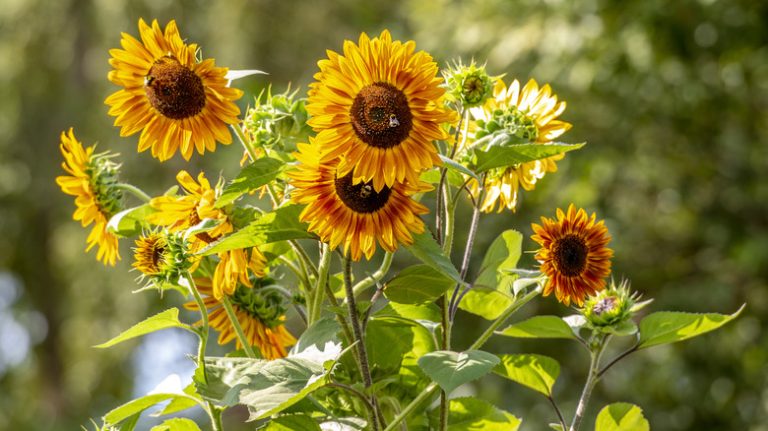Winter is a season that can pose many challenges for gardeners, especially when it comes to caring for delicate flowers like pansies. These lovely blooms are known for their vibrant colors and are often planted in gardens to add a pop of color during the cooler months. But how do you ensure that your pansies will survive the winter and come back strong in the spring? Here are some helpful tips to support your pansy plants during the harsh winter season.
Pansies are cold-resistant plants that can withstand low temperatures, but they still need some protection to prevent any damage. During the winter months, the temperature can drop significantly, and frost can be dangerous for pansies. One way to protect them is by covering them with fabrics or other materials to provide insulation. This will help prevent the cold from penetrating the leaves and impacting the roots.
It’s also important to consider the impact of temperature fluctuations on your pansy plants. If the temperature drops too much during the night and rises too much during the day, it can cause stress on the plants and lead to symptoms like wilting leaves or stunted growth. To prevent this, it’s recommended to plant your pansies in areas where they can receive some shade during the hottest part of the day.
Another factor to consider is the level of light your pansies receive during the winter season. Pansies need a good amount of light to thrive, but too much direct sunlight can also be damaging. If your pansies are planted in a spot with full sun exposure, it’s a good idea to provide some light shade to protect them from the harsh rays. This can be done with a shade cloth or by placing them in a partially shaded area of your garden.
When it comes to watering your pansies during winter, it’s important to strike a balance. While you want to make sure the soil doesn’t dry out completely, overwatering can also be detrimental. Pansies have shallow roots, so it’s better to water them lightly but frequently. This will ensure that they have enough moisture without being at risk of rot or other diseases that can occur from waterlogged soil.
In conclusion, with proper care and attention, pansies can easily survive the winter and come back strong in the spring. By providing them with the right temperature, light levels, and watering schedule, you can ensure that your pansies will continue to bloom and beautify your garden even during the coldest months of the year. These tips are helpful for both gardeners who have pansies planted directly in the ground and those who have them potted or in greenhouses. So, don’t let the winter season bring your pansies down and enjoy the beauty of these cold-resistant flowers all year long.
How Cold Can Pansies Tolerate Answered
Pansies are known for their hardy nature and ability to tolerate cold temperatures. They are often the first flowers to bloom in the spring and can even survive the harsh winters in some regions.
Though pansies are cold-resistant, they do have limits when it comes to extreme temperatures. Generally, pansies can tolerate temperatures as low as 10°F (-12°C) without any major damage. However, their tolerance may vary depending on certain factors.
In terms of protecting pansies during winter, it is important to take some precautions. Potted pansies are more vulnerable to cold than those growing in the ground. If you have potted pansies, it’s advisable to bring them inside during very cold nights or provide proper insulation to prevent the soil from freezing.
When it comes to pansies growing in the ground, a layer of mulch can be applied to protect the roots from excessive cold. Some gardeners also use straw or pine needles in addition to mulch to provide extra insulation. These materials help to maintain a more stable temperature around the roots and prevent them from freezing.
Another important factor to consider is lighting. Pansies require a good amount of sunlight, even in winter. They can tolerate some shade, but too much darkness can result in weak growth and fewer blooms. So, it’s crucial to place pansies in a location where they can receive adequate light during the day.
In case of heavy snowfall, pansies can be easily crushed and damaged. To protect them, you can place a frame or wooden cover over the plants when snowfall is expected.
It is also worth mentioning that pansies have a natural ability to wilt and recover. In very cold weather, pansies may wilt during the night but recover in the morning when temperatures warm up. This wilting is a normal response to cold temperatures and does not necessarily mean the pansies are dying.
To understand whether your pansies are surviving in the cold or not, you can look for symptoms such as yellowing leaves or stunted growth. If you notice these signs, it may indicate that the pansies have been exposed to temperatures lower than what they can tolerate.
In summary, pansies are cold-resistant and can tolerate temperatures as low as 10°F (-12°C). However, it is important to take necessary precautions to protect them from harsh winter conditions. By potted care, providing proper insulation, and understanding their cold tolerance levels, you can ensure that your pansies survive and continue to bloom even during the coldest months.
How cold can pansies tolerate
Pansies are a hardy flowering plant that can tolerate cooler temperatures, making them an excellent choice for winter gardens. However, it’s important to understand how cold pansies can handle to ensure their proper care during the winter season.
Pansies are cold-resistant and can tolerate freezing temperatures and even light frost. They can survive in temperatures as low as 10°F (-12°C) without any damage. However, extreme cold, such as heavy frost or snowfall, can be dangerous for pansies and may cause their leaves and flowers to wither.
In areas where temperatures regularly fall below freezing, it is helpful to provide extra protection for your pansies. Covering them with a frost cloth or using a cold frame can help insulate the plants and shield them from the impact of cold temperatures. This is especially important during the nighttime when temperatures tend to be cooler.
For potted pansies, it is best to bring them indoors or place them in a protected area, such as a greenhouse or a covered porch, to keep them safe from the cold. Make sure to bring them inside if temperatures drop below 20°F (-6°C) to prevent frost damage.
Understanding the symptoms of cold stress in pansies is crucial for their care. If the plant begins to struggle or show signs of poor growth, such as yellowing leaves or stunted shoots, it may be a sign of cold damage. In this case, providing extra protection or bringing the plants indoors can help them recover.
Watering pansies during winter requires extra attention. Pansies planted in the ground do not require as much watering as they go dormant during cooler temperatures. However, potted pansies may need more frequent watering, as containers tend to dry out faster. Ensure that the soil remains moist but not waterlogged to prevent root rot.
Overall, pansies are cold-resistant plants that can withstand cooler temperatures. By understanding their tolerance levels and providing appropriate care, you can enjoy their beautiful flowers throughout the winter season.
Potted pansies
Potted pansies are a popular choice for gardeners who want to bring color to their gardens during the winter season. These cold-hardy plants can tolerate cooler temperatures and continue to bloom even in frosty conditions. To ensure their proper care and protection, understanding the temperature and heat requirements of potted pansies is essential.
|
|
Pansies are best grown in pots or containers where the temperature can be easily controlled. This allows you to protect them from extreme heat or cold. Potted pansies thrive in temperatures between 45 to 65 degrees Fahrenheit (7 to 18 degrees Celsius), making them ideal for cooler regions. During the day, potted pansies enjoy full sun exposure, as long as the temperatures are not too high. However, they should be provided with light shade during the hottest parts of the day to prevent their foliage from scorching. Understanding the temperature requirements of your potted pansies will help you create the ideal growing conditions for them. Pine straw or mulch can be used as a cover during extremely cold nights. This will help insulate the pots and prevent the roots from freezing. Additionally, covering the pots with fabrics such as burlap can provide extra protection from frost and snow. It is important to note that potted pansies are more susceptible to frost damage compared to pansies grown in the ground. Frost can easily damage the delicate foliage and blooms. To prevent this, make sure to bring your potted pansies indoors or cover them during nights when frost is expected. Another thing to consider when caring for potted pansies in winter is their watering needs. Potted pansies require less water during the cold season, as their growth slows down. Water them sparingly to prevent excessive moisture and rot. However, do not let the pots completely dry out, as this can be dangerous for the plants. Potted pansies are also vulnerable to pests, such as moles, that are active during the winter season. Make sure to take necessary measures to protect your pots from these pests and ensure the health of your pansies. |
How cold hardy are pansies
Pansies are known for their ability to tolerate cool temperatures and are considered cold-resistant plants. They can survive freezing temperatures and even bloom in colder climates. However, pansies do have their limits when it comes to extreme cold.
The hardiness of pansies depends on a number of factors, such as the temperature and how well they are established in the garden. Pansies can tolerate a light frost when they are fully grown and established, but a hard frost or freeze can result in damage to their leaves and flowers.
In order to protect pansies from extreme cold temperatures, gardeners can take a few steps. One tip is to mulch around the plants with straw or pine needles to provide insulation. This will help to keep the ground temperature more stable and protect the roots of the pansies. Another tip is to cover them with fabric or burlap during particularly cold nights to help trap heat and protect them from freezing. Gardeners should also make sure to water pansies when the temperature starts to rise after a winter storm, as this will help to thaw out any frozen parts of the plant and prevent damage from frost.
Though pansies are generally considered cold-hardy, there are some symptoms to look out for if they are exposed to extreme cold. Signs of cold damage on pansies include wilting or drooping leaves, blackened stems, and frozen flowers. If these symptoms occur, it is best to remove any damaged parts of the plants and continue to provide care and protection.
It is important for gardeners to understand that while pansies can withstand cooler temperatures, they are not completely frost-proof. Therefore, it is always recommended to check the USDA hardiness zone for your area and consider the local climate conditions when growing pansies in winter. This will help you determine how much cold pansies can handle and what additional measures may need to be taken to protect them.

